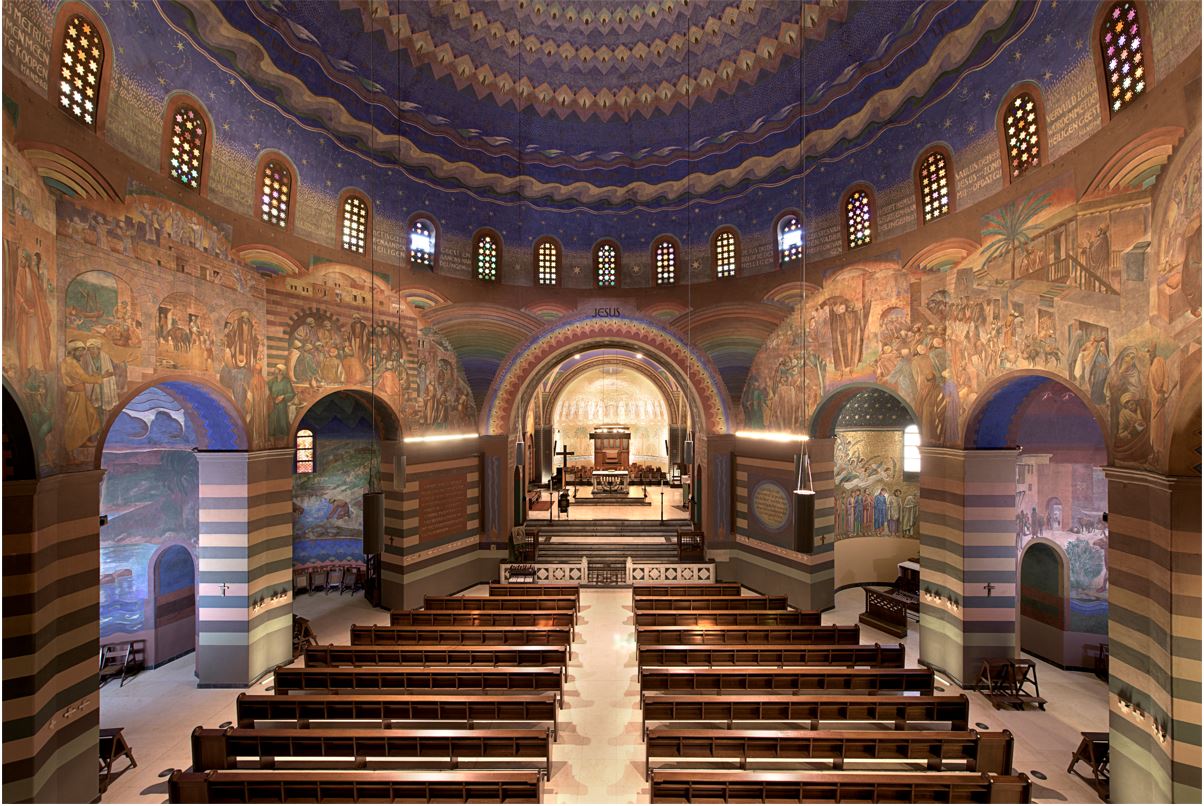
When Dutch people enjoy their holidays in France, Germany, Spain or Italy a church visit is guaranteed to be part of their journey. Apparently we love the beauty, peace and spirituality that churches, convents and synagogues have to offer. But why then, do we not visit churches for that same purpose in our own country? Out of this astonishing and unpleasant discovery the idea of the Largest Museum of the Netherlands was born. This article tells about this initiative with which we put a well-deserved spotlight on the phenomenal beauty of Dutch church interiors.
Museum Catharijneconvent
Museum Catharijneconvent is the state museum for the art and culture of Dutch Christianity. We are situated in the city of Utrecht in the centre of the Netherlands, in a beautiful medieval monastery. The collection of Museum Catharijneconvent consists of 70.000 objects. At our foundation, several already existing Episcopal collections were transferred to Utrecht. These collections from the Roman Catholic tradition were joined together with collections from the Old Catholic Church and the several protestant denominations. Of course, a considerable number of objects in our collection derive from Dutch monasteries. With this splendid collection we set up a permanent exhibition that tells the story of Christianity in the Netherlands and of course we compose appealing temporary exhibitions on a variety of Christian themes, such as Mary Magdalene, the church in the sixties and the Gospel.
Care for collections of churches and convents
But Museum Catharijneconvent has a larger responsibility. Acting upon instructions from our national government we support churches in taking care of their interior and their movable religious heritage. We do this for all Christian denominations, so we are talking about roughly 7.000 buildings and approximately 700.000 objects in the Netherlands.
Since 1971 heritage specialists have been visiting Dutch churches and convents to draw up inventory lists of their interiors and the movable religious objects in those interiors. We give out art historical and religious historical validations for the registered items and we counsel churches that are forced to close their doors in these times of secularisation to accurately and respectfully reappoint their heritage. In the Netherlands, we are confronted with rapid secularisation. For the next twenty years, we expect around fifty per cent of the churches to lose their religious purpose.
One hundred breath-taking interiors
To raise public awareness for the beauty of our Dutch church interiors and for the threat that they are exposed to we have published a beautiful book titled: Church interiors in the Netherlands. The book showcases the hundred most breathtaking and distinctive church and synagogue interiors. With that, the book tells the story of 800 years of ecclesiastical architecture and decoration.
Being a museum we of course started wondering why so few people were aware of these hidden treasures in our country, especially since we are known for visiting every church, cathedral or chapel whilst being abroad. We started street corner research, showing people a picture of an elaborately decorated neo-gothic church and asking them to tell us where they thought this church could be found. The answers ranged from Portugal to Turkey. What a surprise it was when we told them that the church in the picture was right around the corner. We took them there and the reactions were priceless. It gave us the security we needed: our idea of the Largest Museum of the Netherlands would work.
Ideal of the Largest Museum of the Netherlands
It was our dream that more visitors would experience the splendour of the church interiors: smell the incense, see the sunlight coming in through beautifully coloured stained glass windows, sit on the hard, but so profoundly carved wooden benches. In 2017 we started a collaboration with thirteen churches and synagogues and nowadays the Largest Museum of the Netherlands consists of eighteen locations, and we are still counting.
Collectively the partners of the Largest Museum have the largest collection of saint statues and pulpits, the largest amount of pipe organs and square metres and the highest number of “employees” of all the museums in the Netherlands. Our goal is to increase the number of visitors and give the locations the same status and information facilities as museums, so we made them more accessible and appealing for people with and without a religious background.
The current eighteen churches and synagogues represent different denominations, different architectural styles and they can be found throughout our country. The locations are all used for religious services; the “museum layer” does not disturb the regular church activities. And very important to mention: The Largest Museum is an extraordinary example of co-creation. Together with our partner we decide what would be the most appropriate set of means to help this church to be more hospitable towards cultural visitors.
Headphones in church
The objective of The Largest Museum of the Netherlands is that we tell the stories that are hidden behind the objects and the architecture and by that, we provide surprising new insights. With several locations, we designed a customized audio tour: one design with unique content in each church. The beacons track the location of the visitors allowing them to either follow a fixed tour or stroll around. The tour showcases the eight to twelve highlights in the interior. Since we want to reach an audience of day-trippers, often people with limited knowledge of Christian symbolism and church rituals, the tour gives accessible basic information, is very to the point and takes only twenty to thirty minutes. And it is a hit: 96% of the visitors would recommend this experience to others.
Golden tip: smile!
Designing a service means taking care of an impeccable customer experience and making sure the project is known to a large audience. So next to the audio tour, the project involved training of the volunteers, designing desks and signage and creating a visual identity for a national campaign. Every location now has its own brochure and movie, to display its beauty on its website, social media and through local tourism and cultural partners. All hosts and hostesses were trained to warmly welcome the visitors with a smile, to provide information about the location and the audio tour and to start a meaningful dialogue with visitors who like to get some more in-depth information.
Together with the partners of the Largest Museum – pre-corona – attracted a considerably higher amount of visitors than before we joined forces. The beautiful church interiors surprise everyone and the beauty persuades people to spread the word, to donate money for conservation and even visit the religious services.
Largest Museum even larger
But of course, we want to enlarge the public support for our collective religious heritage even more. We are strongly investing in reaching a wider audience such as local school classes. It is our objective to add a mosque and/or a Hindu temple to the Largest Museum. And we are very committed to sharing our experience and know-how to advise churches all throughout the country on how to be more accessible and appealing to cultural visitors. All this serves only one goal: to make every inhabitant of the Netherlands and every tourist to our country aware of the cultural and historical abundance our churches have to offer. It only takes enough enthusiasm to protect and preserve our religious heritage for future generations.
For more information: https://www.grootstemuseum.nl/en/
Anique de Kruijf, Head of the department Cultural Heritage in Churches and Convents at Museum Catharijneconvent, Utrecht, Netherlands 2021
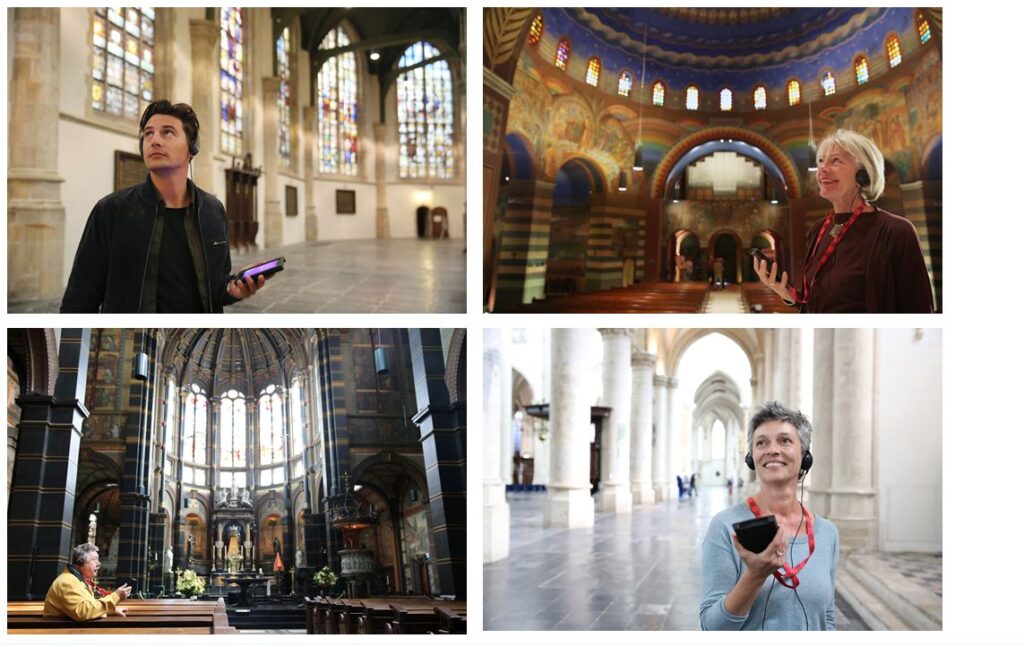
Visitors using the audio tour in churches in Gouda, Heilig Landstichting, Amsterdam and Breda. Photo: Kris van Veen
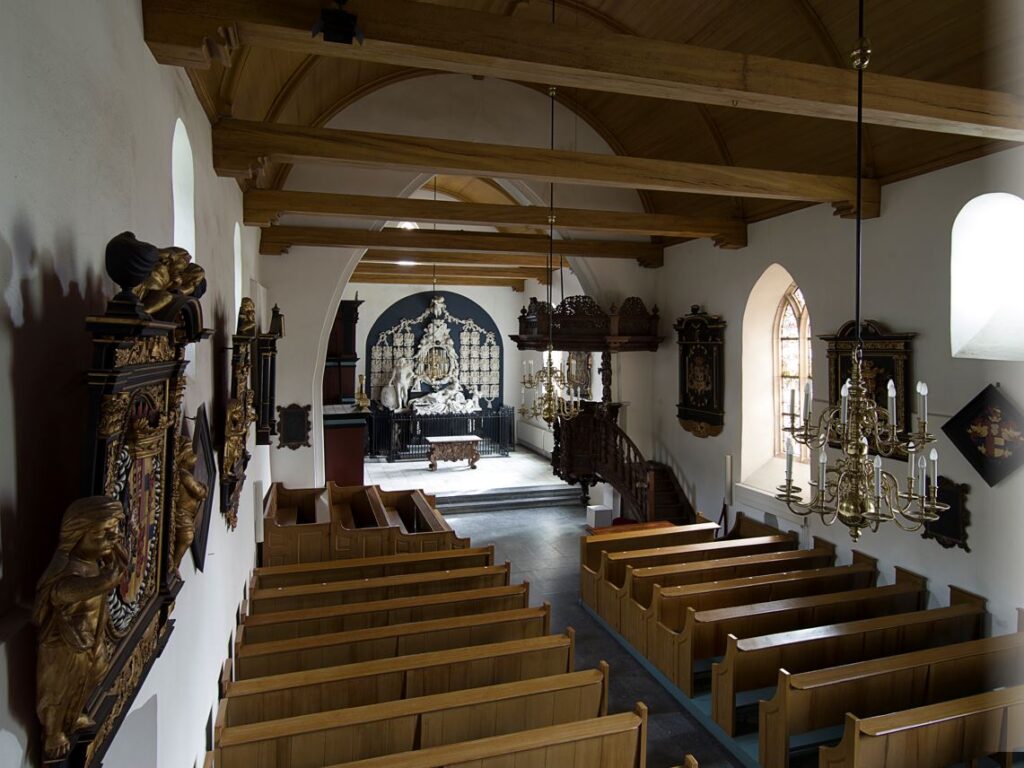
Modest interior with an exuberant memorial monument of the Adels Church (c. 1150) in Midwolde. Photo: Arjan Bronkhorst
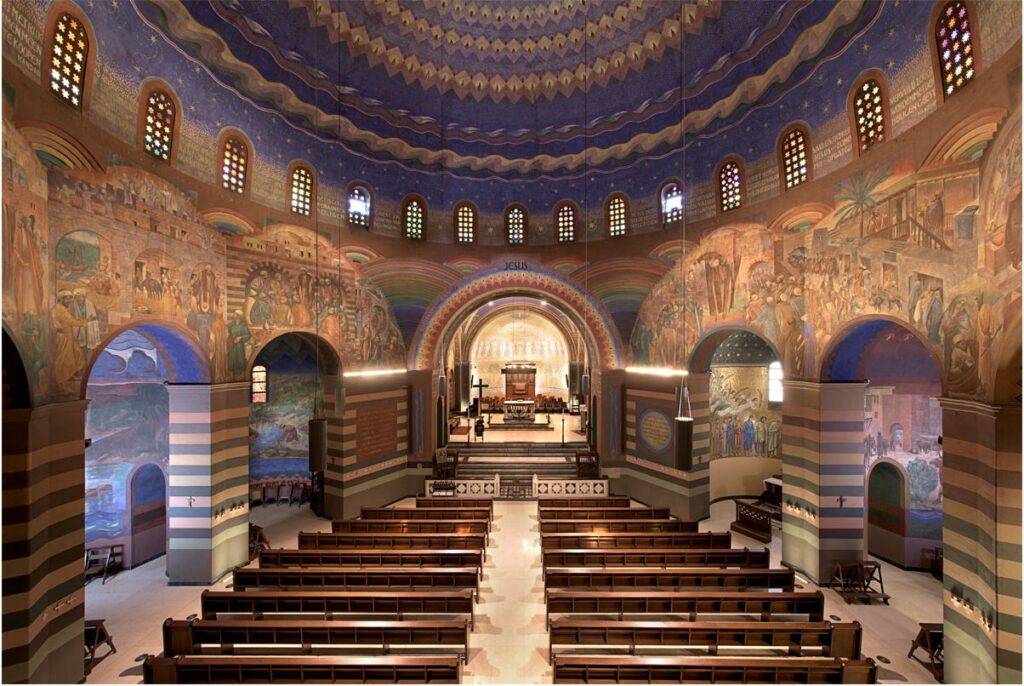
The beautifully coloured interior of the Cenakel Church (1910) in Heilig Landstichting. Photo: Arjan Bronkhorst
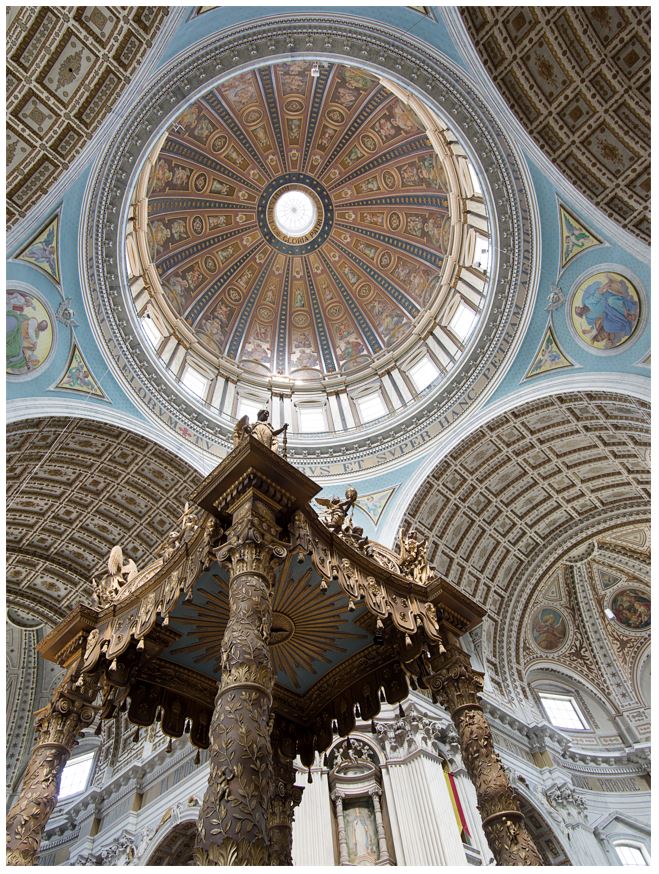
Canopy and dome of the basilica of Saints Agatha and Barbara (1880) in Oudenbosch. Photo: Arjan Bronkhorst





Follow us: